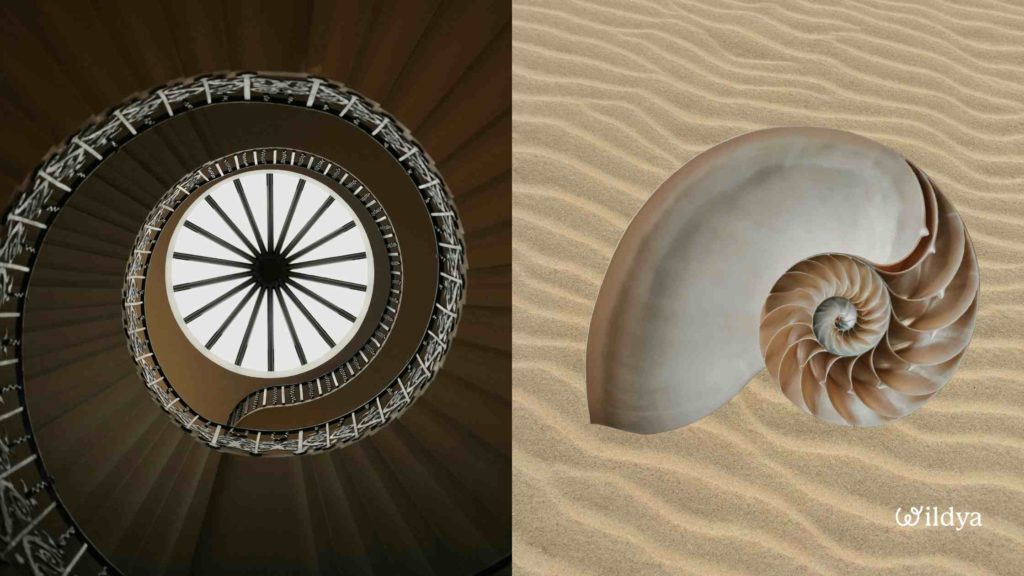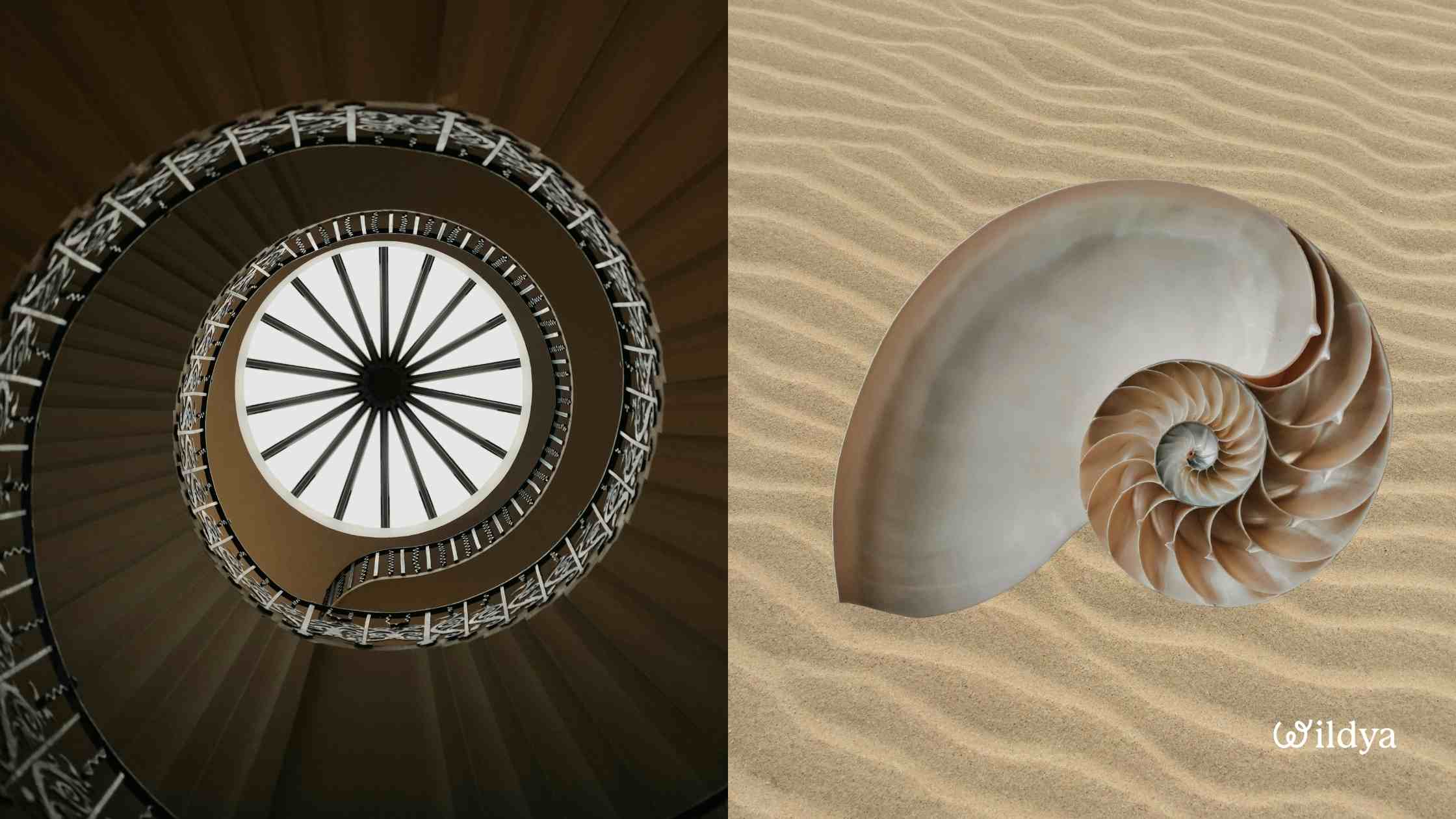
Biomimicry sounds like one of those big words you’d hear in a science lab. But really, it’s just about learning from the best teacher out there: nature!
Where do you think we got the idea of flying? Birds, of course. 🦅
In the Wildya Ecopreneur Community, we organise a masterclass every week to help ecopreneurs like you learn, grow, and bring your wild projects to life.
This time it was Alistair Daynes, co-founder and director of Learn Biomimicry, who came to talk about how nature can inspire the smartest, most sustainable, and seriously creative innovations, through biomimicry.
In this article, we’re taking you into the flabbergasting world of biomimicry, exploring what it is, why it’s essential, and how you can use it in your ecopreneur venture.
All drawn from Alistair and Learn Biomimicry, with some of the coolest biomimicry examples shared during the masterclass!
What is biomimicry?
If you ask Alistair, “Innovation is the most important fact about the modern world, but one of the least well understood.”
But how to understand innovation?
Well, through biomimicry. Nature’s been innovating for 3.8 billion years already. She knows a thing or two about what works.
Biomimicry is all about understanding how nature solves problems, by learning from what already works.
Biomimicry is all about learning from nature, not just copying it
Like Alistair said, there’s a big difference between copying nature and understanding how she works.
Biomimicry is not about sticking fins on a plane because it looks like a bird. It’s about asking how a bird flies. What makes its wings efficient, and what principles it can teach us.
That’s the real magic of biomimicry. 🧚🏻
When we learn, we tap into strategies that have worked for billions of years. And that’s where innovation begins.
🕷Spiders make silk stronger than steel, and plants purify air without filters.
Nature doesn’t brag. She’s just incredibly efficient.
For ecopreneurs, this mindset changes everything.
A product, a service, a community. All can be designed to behave like a living system: efficient, circular, and connected.
Just like ecosystems, your ecopreneur projects can grow by creating value for others, regenerating instead of depleting.
When nature becomes our mentor, not just a model, you shift from a “sustainable business” to a living one: adaptive, connected, and thriving within its environment.
Nature’s got the best tricks, we just need to turn them into innovation
In nature, every shape, every texture, every movement has a reason.
With biomimicry, it pushes us to look for the Why behind the How.
As Alistair said, living organisms don’t test ideas randomly. They try, adapt, evolve, and refine their solutions over billions of years. No need for brainstorming when natural selection’s already done the hard work.
Our role in all this? To observe, understand, and translate these strategies into innovation.
Not to copy a lotus leaf, but to understand why its surface repels water.
Not to imitate a wing, but to learn how it slips through the air with so little resistance.
Not to reproduce a kingfisher’s beak, but to discover how its shape lets it dive into water without a splash. 💦
For ecopreneurs, that means designing projects the same way: test, adjust, evolve.
Every prototype, every version of your product or business is a learning curve, not a failure.
Just like nature, your ideas get stronger with each iteration.
And lucky you, nature’s already done the testing part!
We just have to pay attention and turn her genius into innovation. 💡
Want to dive deeper into what Alistair shared during the masterclass?
Watch the full recording and explore all our replays inside the Wildya Ecopreneur Community!
Why is biomimicry essential for your nature business?
Biomimicry is basically a compass.
Because when we take inspiration from nature itself, we create solutions that last, that adapt, and that respect the world they come from.
And the best part? Nature’s not afraid to try, fail, and start again! 🍃
Because innovation needs freedom, and nature’s a pro at it
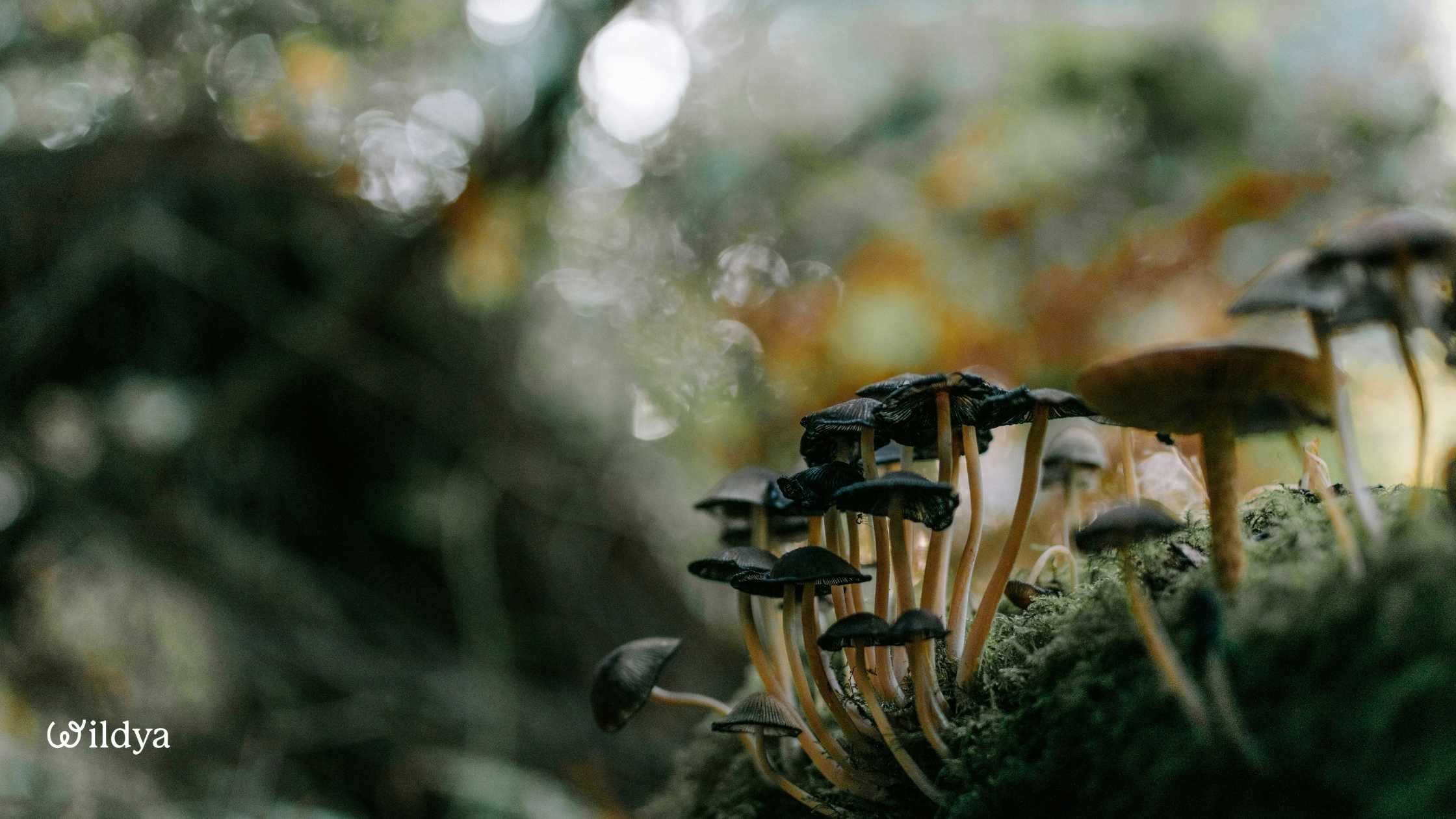
In nature, nothing’s fixed.
Everything evolves, adapts, gets tested.
Alistair explained that nature innovates without a plan, hierarchy, or “business strategy”. Just with the freedom to experiment.
It’s by testing, failing, and adjusting that nature finds lasting solutions. Every organism evolves based on what works. Not what’s planned.
Look at a forest: no meetings, no project manager, yet everything works. Every plant, fungus, and insect experiments, adjusts, collaborates. And from this organised chaos comes something incredibly stable.
That’s where biomimicry becomes essential: it teaches us to design the same way. Through freedom, feedback, and adaptation, not control.
When you’re building your nature venture or developing a product, you need to leave room for change, grounded in collaboration, and guided by feedback rather than fixed plans.
Of course, you still need structure, strategy and direction, but the most important lesson from nature is to give enough space for experimentation, change, adaptation and adjustment for innovation to grow.
Because nature works within limits, and still pulls off genius ideas
Nature is doing with what she has.
Nothing more, nothing less.
No waste, no excess, just perfect management of her resources.
And yet, she’s creating wonders.
Alistair showed it well: each organism lives within limits (energy, materials, space) and, despite that, life always finds a solution.
Biomimicry is a real lesson for all of us. Because in our business, we often chase “always more”: faster, bigger, more profitable.
But nature proves that we can do better with less.
Leaves capture sun energy without having to store it in batteries. 🍂
Termite mounds regulate temperature without a single watt of electricity. 🐜
Every system in nature runs in closed loops: waste becomes food, outputs become inputs, everything is reused and transformed.
These biomimicry examples show that constraints don’t block creativity. They stimulate it. When you work within limits (materials, energy, budget) you’re forced to innovate smarter, just like nature does.
That’s the model for you, ecopreneurs: designing products, services, and supply chains that are circular.
So, if nature can create beauty, efficiency, sustainability with limited resources… Why not us?
You’re now feeling inspired? With the Wildya Ecopreneur Community, you learn from nature with others who are turning inspiration into real change, one project at a time.
And because we love biomimicry (and learning from nature) even more, by joining the community you’ll also get access to exclusive perks, like a discount on Learn Biomimicry courses. 🌿
How to apply biomimicry in your ecopreneur venture?
The beauty of biomimicry is that it’s not just for researchers in white coats.
It can be applied to your project, your product, your nature venture…
In a nutshell, to your ecopreneur adventure!
Start with function and context: ask “What would nature do?”
Before diving headfirst into an idea, Alistair reminded us of something essential: everything starts with a question.
What would nature do?
Because in nature, everything has a function and a context.
A cactus stores water because it grows where it’s scarce. 🌵
A Namib desert beetle captures water from fog because it lives where rain rarely falls. 🪲
Nothing’s created by chance.
That’s the first step of biomimicry: observing what nature is trying to achieve, and using it as inspiration to solve our own challenges.
1️⃣ Before imagining a solution, ask yourself: what function do I want to fulfill? To protect, isolate, filter, transport…?
2️⃣ Then think about the context you’re working with: dry, humid, cold, urban, limited resources?
3️⃣ Once you’ve got that, start looking at how nature does it!
That’s where everything shifts. From imposing ideas on the world to co-creating with it. 🌍
Your go-to playbook to start experimenting
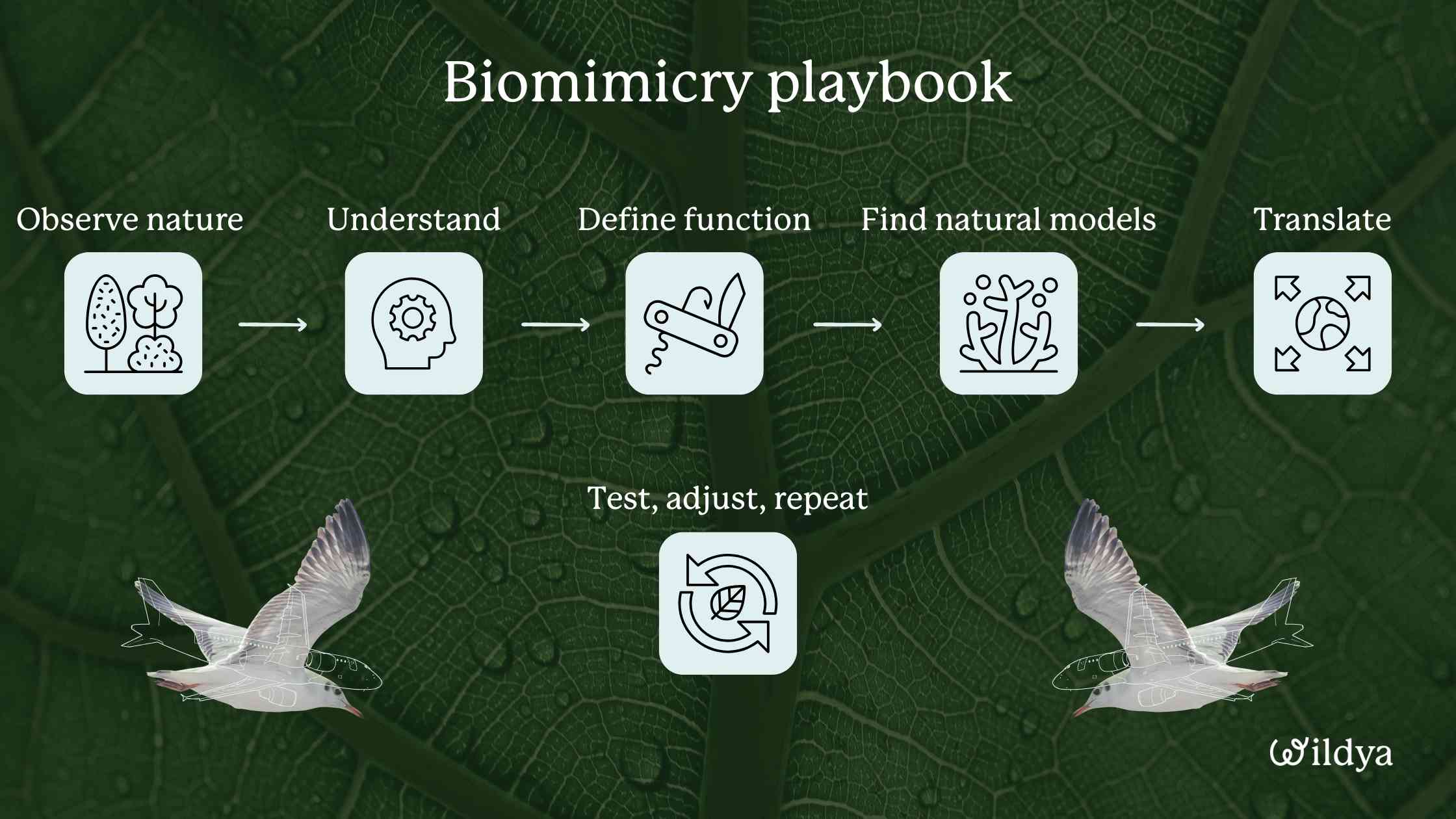
Applying biomimicry is a mindset.
Everything starts by observing, asking questions, understanding, translating what nature’s already doing, and then testing it out, like Alistair said.
The playbook of biomimicry is:
1️⃣ Observe nature: really observe it. Look how nature acts, reacts, adapts.
How does this tree capture light? How does this plant defend itself without moving?
2️⃣ Understand: ask the right questions.
Why does it work? In what context? What can I learn from this process?
3️⃣ Define the function: before creating anything, ask “What problem do I want to solve?”
4️⃣ Find natural models: once you’ve got the function, look around to see how nature already does it.
Remember, you’re not copying what it looks like, you’re learning from what it does.
5️⃣ Translate: here’s where the magic happens.
Turn what you observed into a concrete idea adapted to your own context.
🔁 And then: test, adjust, repeat.
Just like nature’s been doing all along.
Because biomimicry is about experimenting, learning, evolving.
You stop seeing just a tree. You see an engineer.
Not a forest. But an open-air lab. 🔬
Biomimicry examples (from the masterclass)
Alright, enough talking. Wanna see what biomimicry looks like in action?
Let’s dive into a few biomimicry examples Alistair shared during the masterclass.
Velcro and the burr: one of the coolest biomimicry examples ever
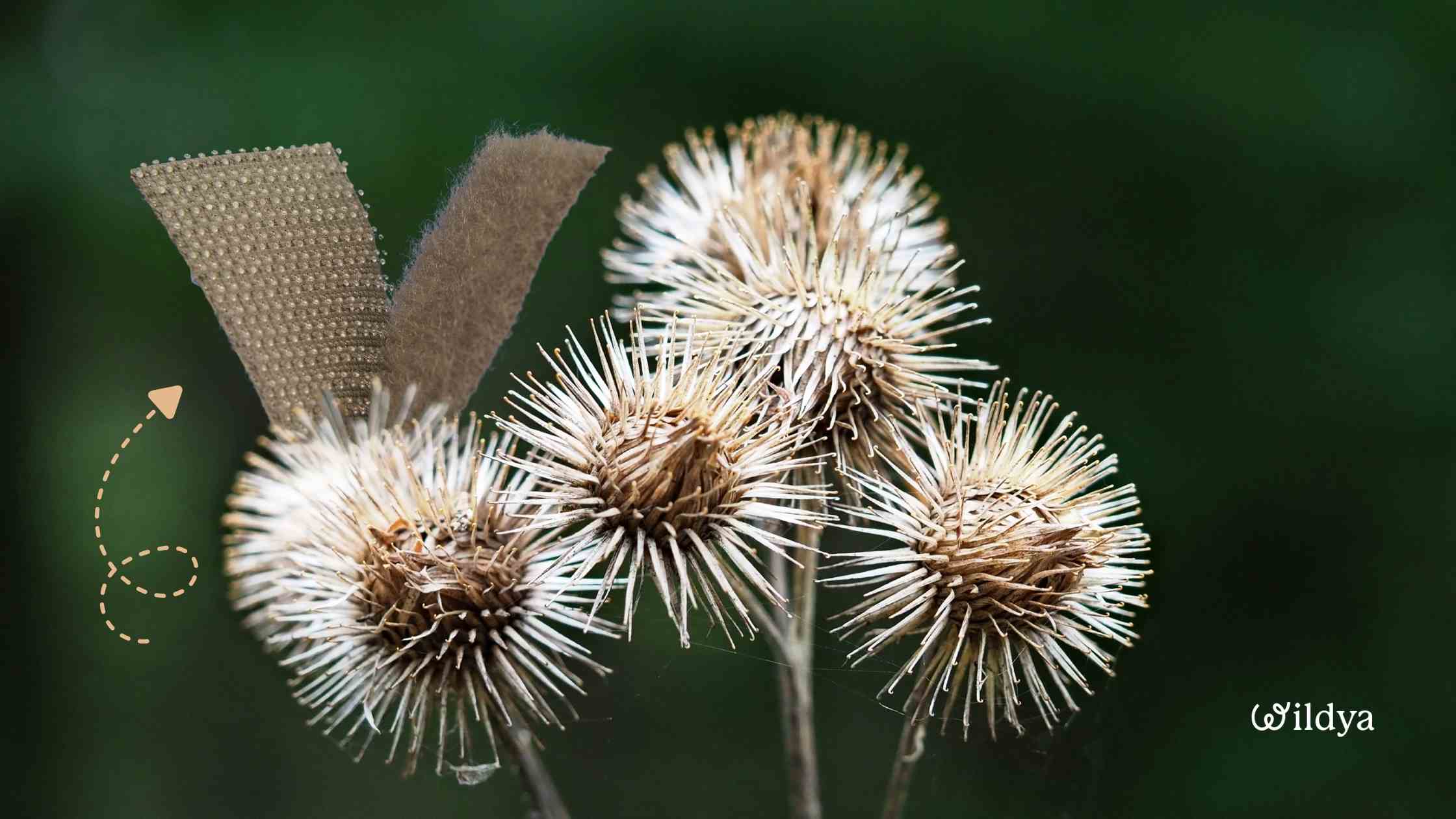
You’ve probably used it before without even realising.
Velcro.
And yet, it’s one of the most famous biomimicry examples out there.
As Alistair shared during the masterclass, it all started with a simple walk.
A Swiss engineer, George de Mestral, noticed little spiky burrs sticking to his pants and his dog’s fur.
Curious, he took a closer look under the microscope… and discovered burdock fruits, covered in tiny hooks that latch onto almost everything! 🔬
From that simple observation came a brilliant idea: Velcro.
A fastening system inspired by nature. Practical, reusable and sustainable.
A perfect attachment. No glue, no waste.
Just an idea born from curiosity and the observation of nature! 🌿
Sharkskin denticles: the secret behind cleaner, faster designs
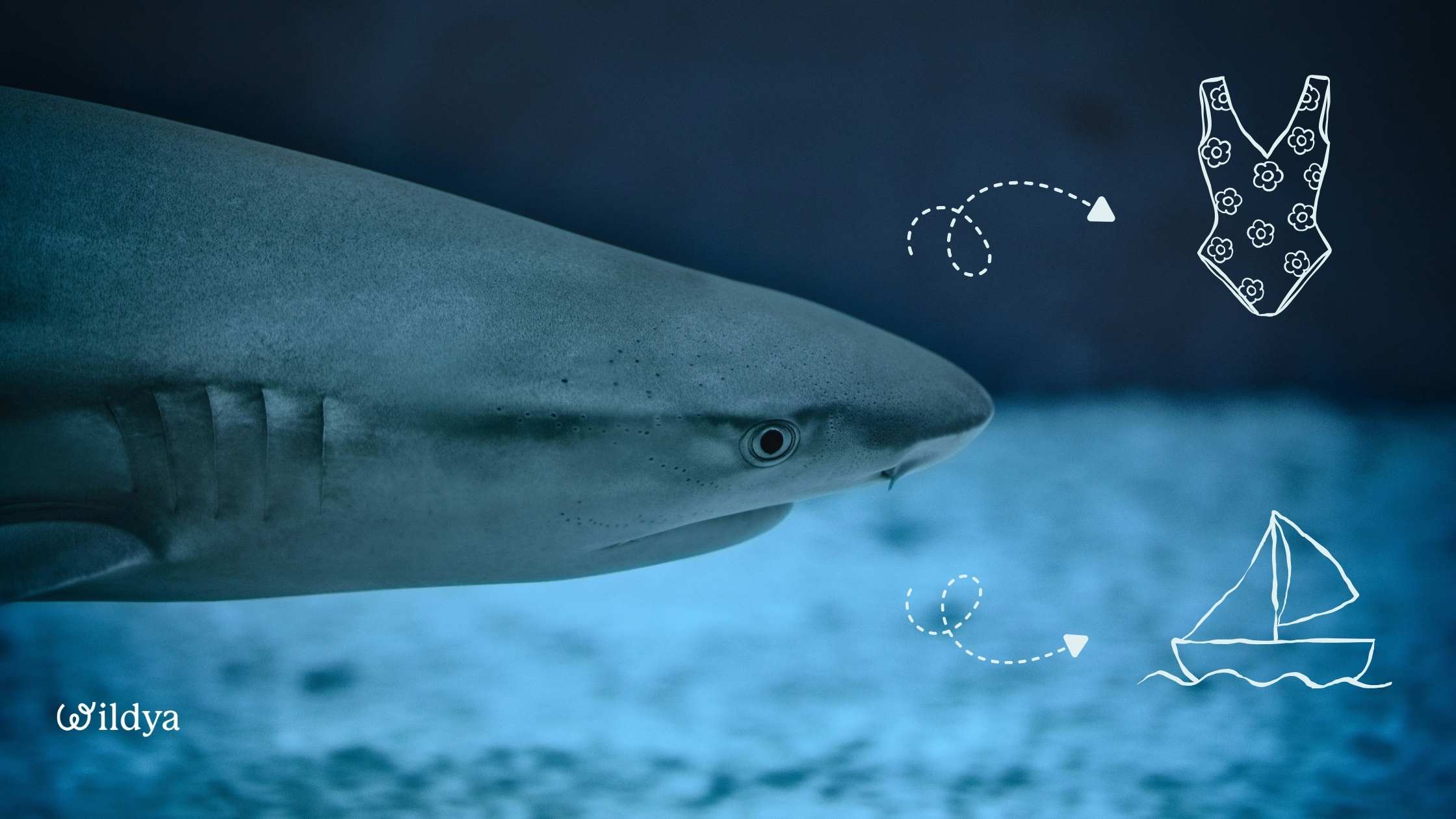
Sometimes, the most significant innovations come from where you’d least expect them.
Like… shark skin. 🦈
At first glance, it looks smooth.
But if you look closer, it’s actually covered in tiny denticles. A bit like scales, but shaped like teeth.
And these little denticles?
Their job is to reduce water friction and stop microorganisms from sticking.
The result?
Sharks swim faster, stay clean, and save energy!
Engineers have taken inspiration from them to design swimsuits, boat hulls, and even antibacterial coatings. By understanding how these denticles work!
Another proof that nature’s already found the smartest solutions. We just have to know how to look. 👀
Plant volatiles: using nature’s chemistry to fight food waste
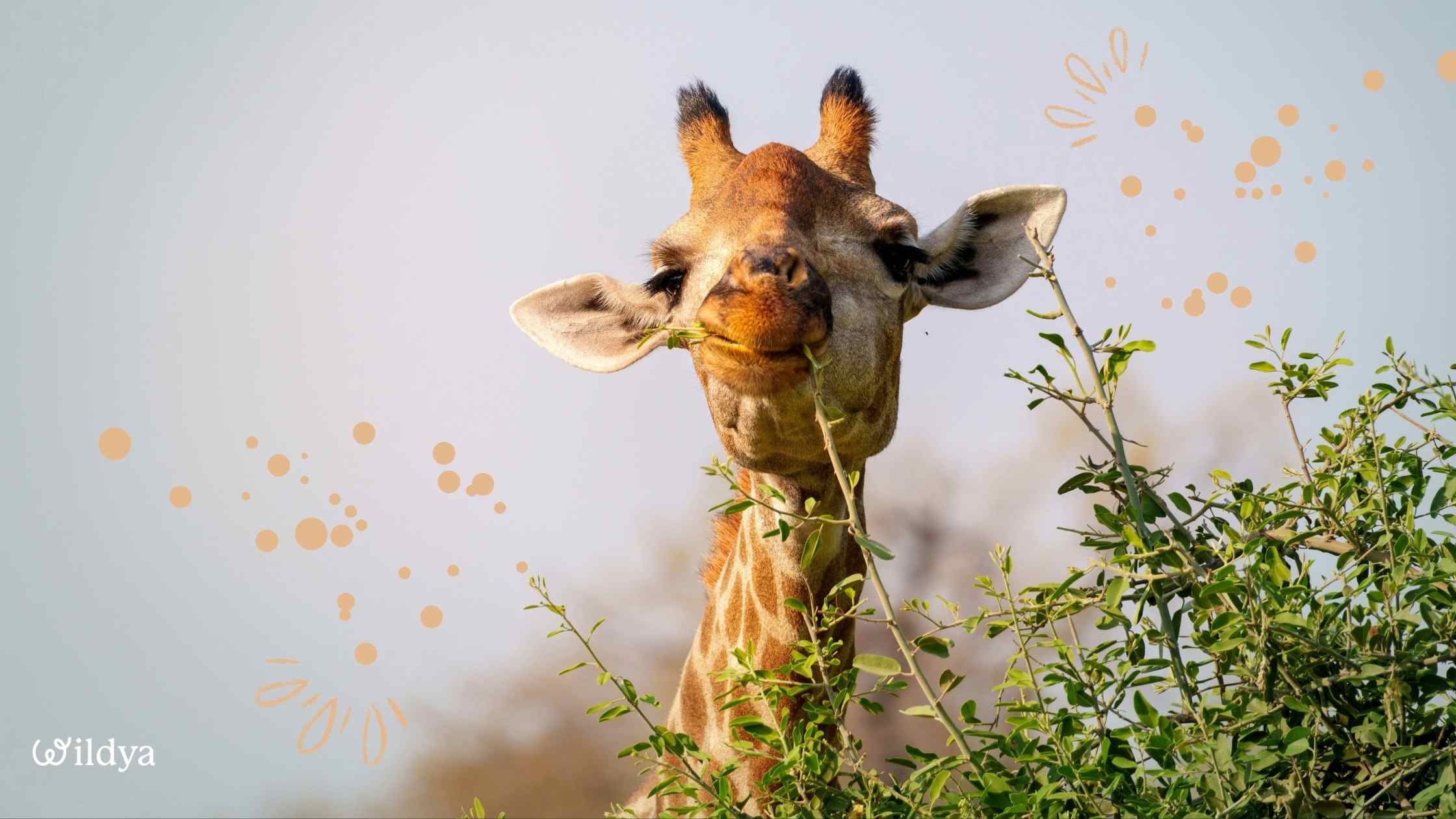
Did you know that some plants can actually “talk” to each other?
Not with words.
But through chemical signals floating in the air.
When a giraffe starts munching on an acacia, the tree reacts. 🦒
It releases tiny molecules called volatile organic compounds, a kind of chemical message sent through the wind.
Those signals reach nearby acacias, warning them of the danger.
In response, they change the taste of their leaves, making them bitter.
The giraffe quickly loses interest and moves on.
This natural communication system is now inspiring real-world innovation: scientists are developing food packaging that reacts just like plants, releasing natural protective substances when food starts to spoil.
Less waste. More freshness!
Once again, nature shows us the way.
Want more stories like these?
Check out this month’s events. From live masterclasses to sharing salons, with ecopreneurs shaping a wilder world.
Biomimicry is a way of seeing the world.
As Alistair said, nature isn’t a fixed model.
It’s a living library of ideas. Tested, refined, and improved over billions of years.
Observe. Understand. Test. Repeat.
That’s what nature does.
And that’s precisely what you can do too, in your projects, your products, your business.
The biomimicry examples we explored are a reminder of what’s possible when we stop forcing and start observing.
Nature shows us that innovation is about creating better with limited resources.
So, if you’re dreaming of a project, a product, a truly sustainable idea… start by looking outside! The answer might be already there… 🌳
Already got an idea inspired by nature? Ready to turn it into something real? Wow you’re not wasting time!
With our Ecopreneur Beginner Bootcamp, in just 6 weeks we help you bring your vision to life.
You’ll validate your idea, build your business model, create your offer, and finally score your first sale! Along with other wild ecopreneurs, like you!

